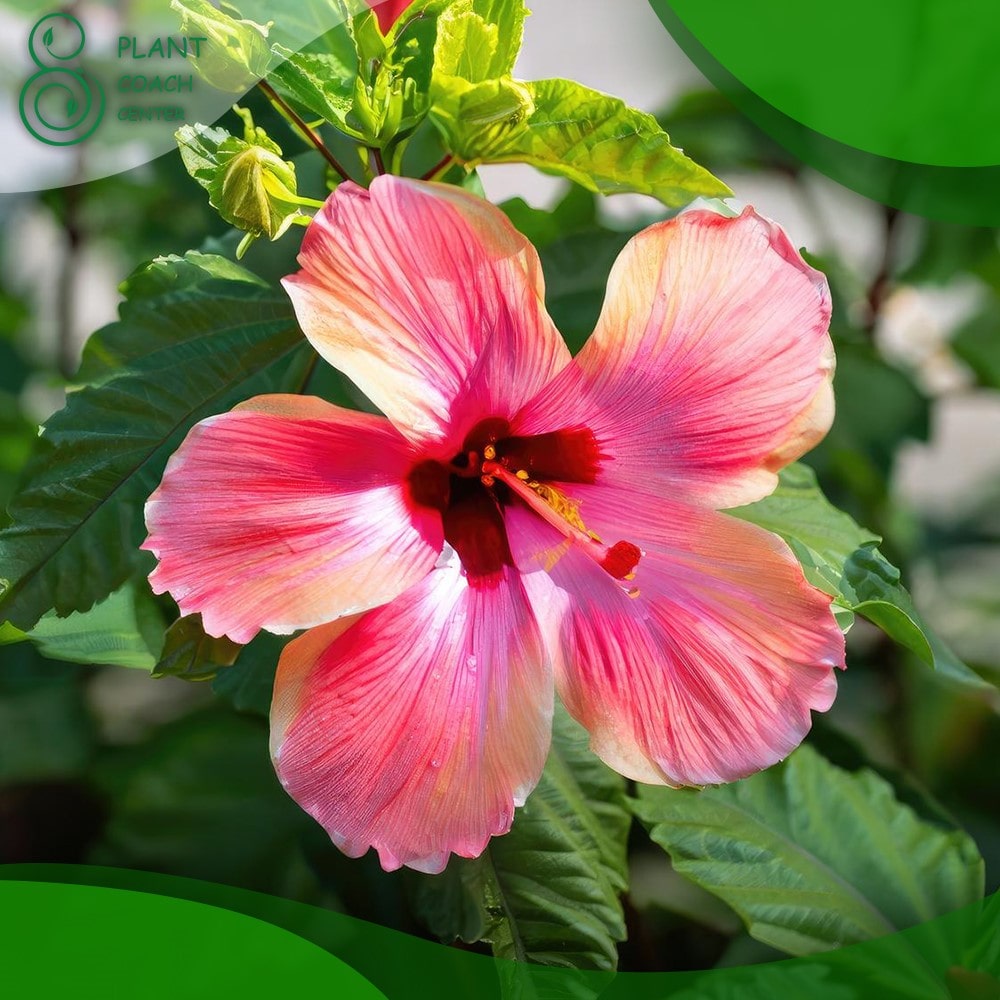When to Cut Back Lavatera
Lavatera plants, or mallow or tree mallow, are a beautiful addition to any garden. This genus encompasses various species characterized by their vibrant flowers, attractive foliage, and easy maintenance. Lavatera plants belong to the Malvaceae family, which includes other well-known plants like hibiscus and hollyhocks.
In this comprehensive guide, we will delve into the world of Lavatera, focusing specifically on when to cut back these lovely plants for optimal growth and beauty.
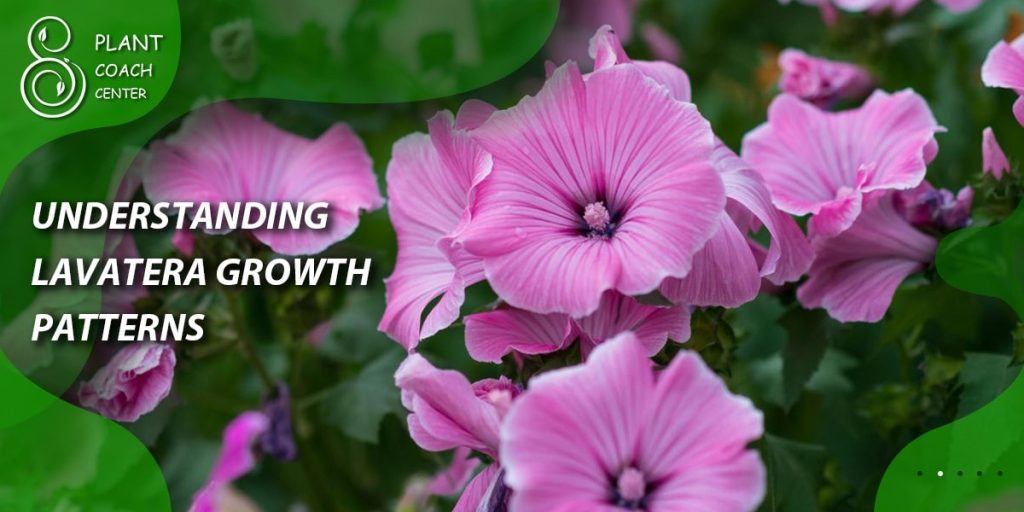
Understanding Lavatera Growth Patterns
To effectively care for Lavatera plants, it is essential to understand their growth patterns. Lavatera plants typically go through several growth stages during their life cycle. They start as small seedlings, develop into young plants, and mature into fully grown specimens. Throughout this process, they display different growth rates and may experience fluctuations in their appearance.
Various factors influence the growth of Lavatera plants. Adequate sunlight, soil conditions, water availability, and temperature play crucial roles in their development. You can ensure their healthy growth and longevity by providing the optimal environment for Lavatera.
Why and When to Prune Lavatera Plants
Pruning Lavatera plants is a vital aspect of their care routine. Regular pruning promotes overall health, encourages proper shape and form, and stimulates new growth and blooming. Removing dead or damaged branches enhances the plant’s aesthetics and prevents potential diseases from spreading.
The right time to prune Lavatera depends on the plant’s growth cycle and specific species. Generally, the best time to cut back Lavatera is late winter or early spring before the new growth begins. However, it’s important to consider the plant’s natural dormancy period and avoid pruning during excessively cold or frosty weather.
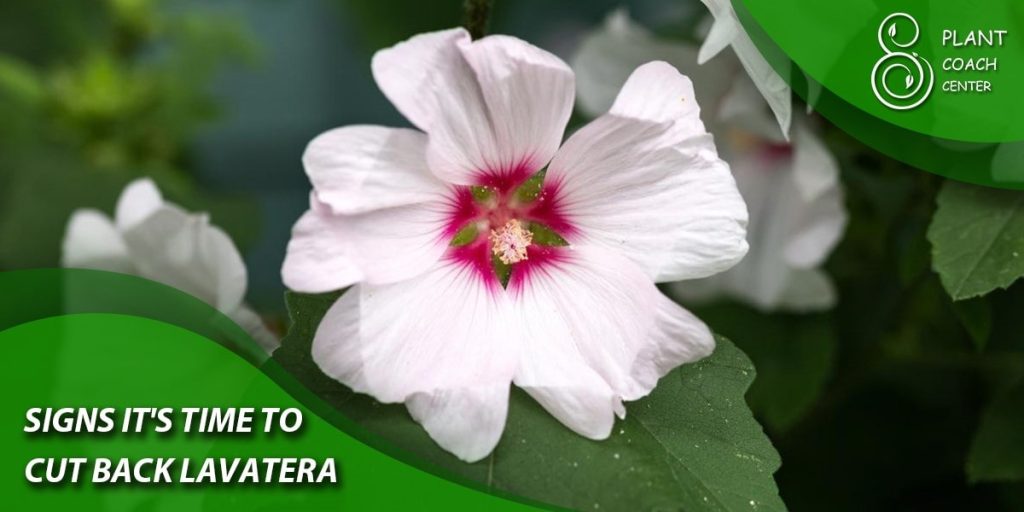
Signs It’s Time to Cut Back Lavatera
Signs that indicate it’s time to cut back your Lavatera plants can vary depending on their specific growth habits and the plant’s overall health. Here are some key signs to look out for:
Overgrown or unruly appearance
Lavatera plants can become leggy or lose their desired shape over time. If your Lavatera has become excessively tall, sprawling, or misshapen, it indicates that pruning is necessary. Trimming back the plant will help restore its compact and well-balanced form.
Dead or damaged branches
Inspect your Lavatera for branches that appear dead, brown, or withered. These branches may result from disease, pest damage, or environmental factors. Removing them through pruning improves the plant’s aesthetics, prevents the spread of diseases, and promotes overall plant health.
Lack of blooming or reduced flowering
If your Lavatera has shown a significant decrease in flower production or has stopped blooming altogether, it may be a sign that pruning is needed. This is especially true if the plant is mature and has not been pruned for some time. Cutting back the plant can stimulate new growth and encourage a fresh blooming cycle.
Weak or spindly growth
Lavatera plants should exhibit sturdy and vigorous growth. If you notice weak, thin, or spindly branches, it could indicate that the plant is not receiving enough sunlight or is competing for resources with neighboring plants. Pruning can help remove crowded or shaded branches, allowing for better air circulation and sunlight penetration and promoting healthier and stronger growth.
Pest or disease infestations
Some pests, such as aphids or caterpillars, can cause significant damage to Lavatera plants. If you notice an infestation of pests or signs of disease, pruning affected branches can help control the problem. Removing infested or diseased parts of the plant reduces the population of pests and prevents the spread of diseases to healthy portions.
It’s important to note that while these signs indicate the need for pruning, choosing the appropriate time for cutting back Lavatera is essential. Pruning during the dormant period or just before the new growth starts in late winter or early spring is generally recommended. This allows the plant to recover quickly and ensures optimal regrowth and blooming in the coming season.
By paying close attention to these signs, you can determine the ideal timing and extent of pruning for your Lavatera plants, promoting their overall health, appearance, and longevity.
Step-by-Step Guide: How to Cut Back Lavatera
A step-by-step guide on cutting back Lavatera plants will give you the instructions to effectively perform the pruning process. Here is a detailed explanation of each step:
- Assess the plant: Look closely at your Lavatera and identify dead, damaged, or diseased branches. These branches should be the first to be removed during pruning. Make sure to have sharp pruning shears, secateurs, gloves, and disinfectant ready before proceeding.
- Shaping the plant: Determine your Lavatera’s desired shape and size. Selectively prune branches that are growing too tall, spreading too wide, or disrupting the overall form of the plant. Trim them back to a healthy bud or lateral branch junction. Make clean, angled cuts just above the selected bud or junction, ensuring no stubs or jagged edges are left behind.
- Encouraging new growth: To promote fresh growth and abundant blooming, selectively prune some of the older branches of your Lavatera. Cut just above a bud or node to encourage new shoots to emerge. This process helps rejuvenate the plant and encourages the development of healthy, vigorous branches.
- Clean up debris: As you prune, periodically remove trimmed branches or plant debris from the area to maintain a tidy workspace. Proper cleanup prevents the spread of diseases and pests.
- Dispose of pruned material: Once you have finished pruning, properly dispose of the pruned branches. Do not leave them lying around; they may harbor pests or diseases. Consider adding the pruned branches to your compost pile if they are disease-free.
- Post-pruning care: Provide proper care for your Lavatera plants after pruning. Ensure they receive adequate water and a balanced fertilizer to support their recovery and promote healthy regrowth. Monitor the plants closely for any signs of stress or issues requiring attention.
Following these step-by-step instructions will enable you to cut back Lavatera plants effectively, promoting their overall health, shape, and blooming potential. Take time, make clean cuts, and regularly assess the plant’s progress to ensure successful pruning and continued growth.
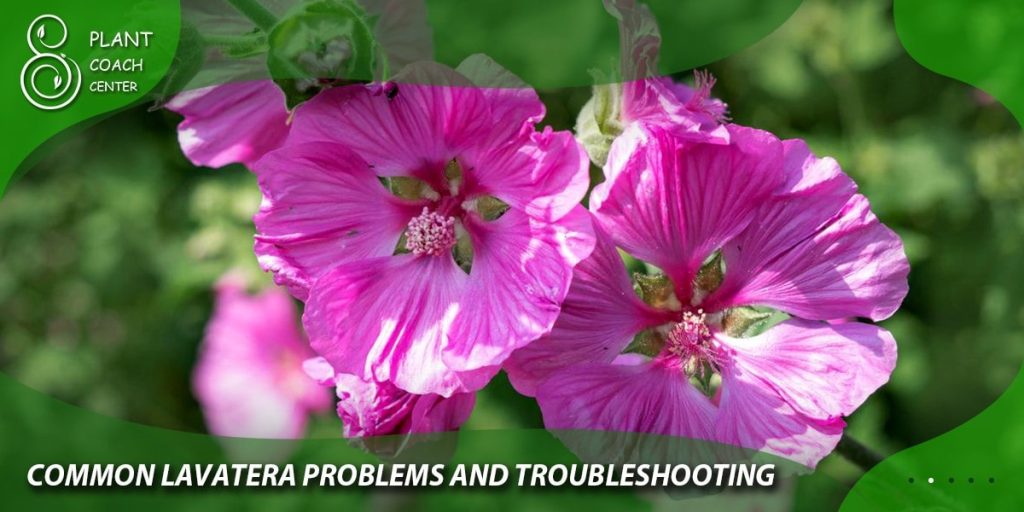
Common Lavatera Problems and Troubleshooting
While Lavatera plants are generally resilient, they can still face certain issues that require attention. Common problems include pest infestations like aphids or caterpillars and diseases like powdery mildew or rust. Regular inspection and hygiene practices, such as removing diseased plant material, can help prevent these problems.
Several solutions are available if your Lavatera is experiencing pest or disease issues. Organic insecticidal soaps, neem oil, or homemade remedies like garlic spray can be effective against pests. Fungicides specifically formulated for powdery mildew or rust can help combat fungal infections. It’s important to follow the instructions on the product label and take a proactive approach to promptly prevent and address these problems.
Caring for Lavatera After Pruning
Caring for Lavatera plants after pruning is crucial to support their recovery and ensure their continued growth and vitality. Here are some important steps to take in caring for Lavatera after pruning:
- Watering: Adequate watering is essential for Lavatera plants after pruning. It’s important to maintain moist but not waterlogged soil. Water the plants deeply, allowing the water to penetrate the root zone. Monitor the soil moisture regularly and adjust the watering frequency based on weather conditions and the soil’s moisture level.
- Fertilization: Lavatera plants benefit from a balanced fertilizer application after pruning. Choose a slow-release fertilizer or an organic option to provide essential nutrients for healthy regrowth. Follow the instructions on the fertilizer package for the recommended application rate and frequency. Applying the fertilizer during the active growing season will help support the plant’s overall vigor and encourage blooming.
- Mulching: Applying a layer of organic mulch around the base of the Lavatera plant is beneficial after pruning. Mulch helps retain moisture in the soil, suppresses weed growth, and provides insulation to the roots. Apply a 2-3 inch layer of mulch, leaving a gap around the base of the plant to prevent moisture accumulation against the stem, which can lead to rot.
- Supporting newly pruned branches: If you have pruned Lavatera branches that are large or heavy, they may require additional support to prevent breakage. Install stakes or use ties to gently secure the pruned branches to provide stability and prevent them from bending or snapping in strong winds. It’s important not to tie the branches too tightly to allow for some flexibility and natural movement.
- Protection from extreme weather conditions: Newly pruned Lavatera branches may be more vulnerable to extreme weather conditions, such as strong winds, heavy rain, or frost. Consider providing temporary protection to shield the plant during inclement weather. Use plant covers or create a shelter using stakes and breathable fabric to shield the Lavatera until it fully recovers and regains strength.
- Regular monitoring: After pruning, monitor your Lavatera plants closely for any signs of stress, disease, or pest infestations. Promptly address any issues that arise to prevent further damage. Regularly inspect the plant for new growth, indicating successful recovery from pruning.
Following these post-pruning care guidelines can help Lavatera plants recover efficiently and thrive. Proper watering, fertilization, mulching, and support while protecting them from extreme weather conditions will ensure their health and promote new growth and vibrant blooming in the coming seasons.
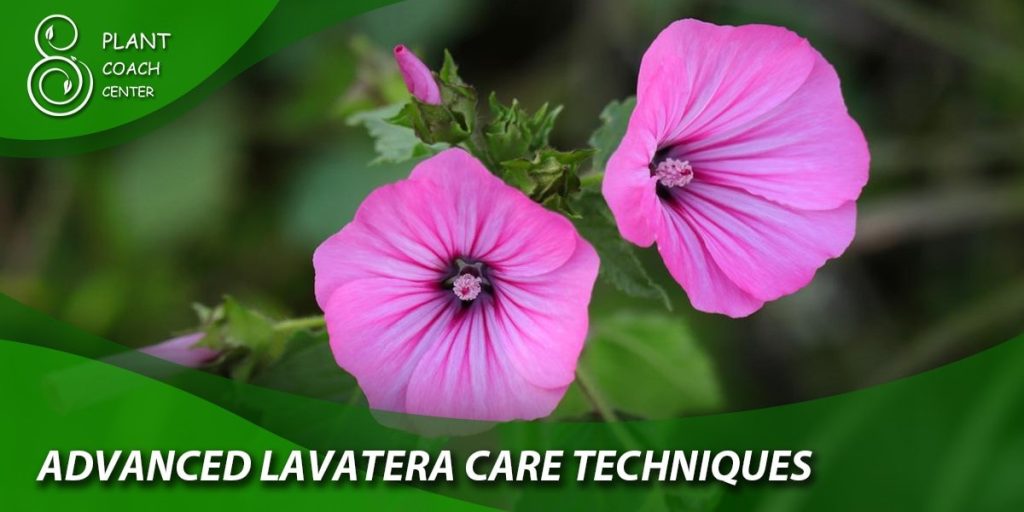
Advanced Lavatera Care Techniques
For those looking to take their Lavatera care to the next level, there are advanced techniques worth exploring. Propagating Lavatera through cuttings is an effective method to create new plants. Take semi-ripe cuttings in late summer, dip them in rooting hormone, and plant them in a well-draining medium. These cuttings will develop into healthy Lavatera plants with proper care and regular watering.
Pruning can also be used to rejuvenate older Lavatera specimens. If your plant has become leggy or overgrown, consider cutting it back more drastically during the dormant period. This will stimulate vigorous new growth and revitalize the plant.
Additionally, Lavatera plants can be trained to specific shapes or structures. Use pruning techniques to encourage lateral growth and form hedges, topiaries, or espaliers. With patience and skillful pruning, Lavatera can be transformed into eye-catching focal points in your garden.
Conclusion
In conclusion, understanding when to cut back on Lavatera plants is essential for their overall health and aesthetic appeal. Pruning Lavatera helps maintain their shape, encourages new growth, and promotes abundant blooming. By recognizing the signs that indicate it’s time to prune, such as overgrowth, dead branches, reduced flowering, weak growth, or pest infestations, you can effectively care for your Lavatera plants and ensure their continued vitality.
Following a step-by-step guide for pruning Lavatera, which involves assessing the plant, shaping it, and stimulating new growth, allows you to perform the task confidently and precisely. Remember to use sharp pruning shears, make clean cuts, and provide post-pruning care to support plant recovery.
Additionally, addressing common Lavatera problems and implementing appropriate solutions, such as organic pest control methods or targeted fungicides, can help maintain the plant’s health and prevent the spread of diseases.
Caring for Lavatera after pruning involves important tasks such as proper watering, fertilization, mulching, and supporting newly pruned branches. Monitoring the plants regularly is crucial, protecting them from extreme weather conditions and promptly addressing any issues.
By incorporating advanced techniques such as propagating Lavatera through cuttings or training the plant into specific shapes or structures, you can further enhance the beauty and versatility of these remarkable plants.
Throughout this comprehensive guide, we have explored the various aspects of Lavatera care, from understanding growth patterns to recognizing signs for pruning, performing the pruning process itself, and providing the necessary care afterward. By implementing these practices, you can cultivate healthy, vibrant, and thriving Lavatera plants that will bring beauty and joy to your garden for years.
So, grab your pruning shears, put on your gardening gloves, and embark on the journey of pruning and caring for Lavatera plants. Your efforts will be rewarded with a visually stunning and flourishing garden showcasing these remarkable plants’ splendor. Enjoy the process, experiment with different techniques, and savor the rewards of nurturing your Lavatera plants to their full potential. Happy gardening!
When is the best time to prune Lavatera?
Late winter or early spring.
How often should Lavatera be pruned?
Prune Lavatera annually.
What should I do if my Lavatera has pests?
Use organic pest control methods or targeted fungicides.


